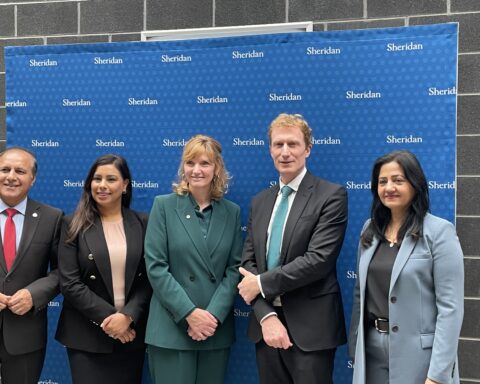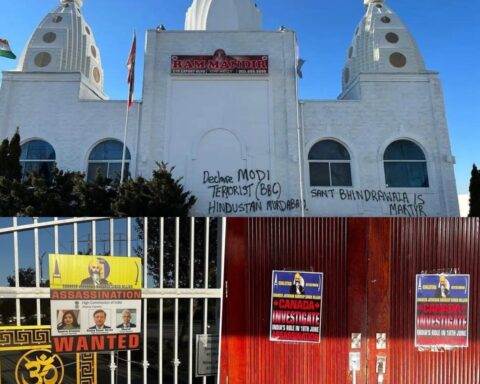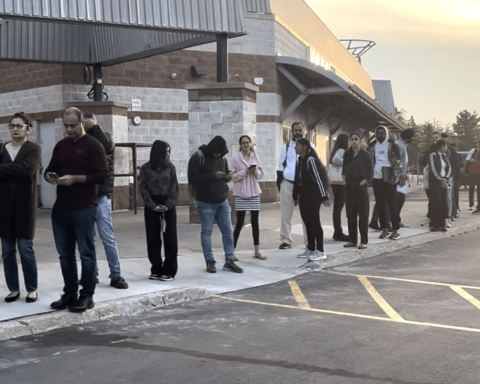Canada’s home-brewed Tim Hortons will be putting the kettle on in India come July, where it will be selling its signature coffee, donuts and other goodies in 300 outlets as part of its bid to globalize the brand. The first store will open in Delhi.
The endeavour is part of the company’s ongoing exploration of growing coffee- and tea-loving markets in developing countries where it may open retail chains, and India’s vast and varied market make it a prime candidate.
According to U.S.-based Restaurants Brands International (RBI) — one of the world’s largest Quick Service Restaurant companies — India is considered “one of the world’s fastest growing markets for coffee and tea retail chains.” RBI owns four of the world’s iconic Quick Service Restaurant brands including Tim Hortons and Burger King.
That’s why Tim Hortons is following the coffee trail of the Goliaths of the international coffee markets like U.S.-owned Starbucks and Dunkin Donuts, and Costa Coffee from the UK, which are already in India.
Turbulent landing
But its landing in India may experience more turbulence than expected, as eastern palettes — with their exotic but diverse, loyal and customized habits — could take time to warm up to Western tastes accustomed to India’s local overlords.
Places like Café Coffee Day, an Indian multinational chain of coffee houses with headquarters in Bengaluru, the Silicon Valley of Asia in South India, and other India Coffee Houses favoured by intellectuals and politicians are all in the competition.
Barista Café and Restaurant, Café Mocha, Aqua Java, apart from the myriads of local street vendors and family-owned businesses — mobile coffee sellers who make money without capital investment — are also in the race.
These localized Indian brands have a strong rapport with their customers due to cultural similarities and a strong kinship with them. They also have real-estate advantages, not having to pay exhaustive rents for premises in premier locations.
“We know our coffee,” said L.R. Sugandhi, a journalist who grew up in Wayanad, a rural district in the state of Kerala, which produces about 90 per cent of the state’s total coffee production.
“I internalized terms like Robusta and Arabica before I learned English. It is an abomination to see coffee infused with cocoa and cranberry and honey. I like my own brew, a mix of two home-grown brands and the right quantity of milk and sugar. I will not pay five-star prices for solutions that gurgle out of coffee machines.”
Indians are ‘purists’
To fraternize the Indian market, Tim Hortons will have to understand local habit patterns as well.
Canadians grab coffee and head to work, and Tim Hortons serving coffee and donuts alongside breakfast, sandwiches, wraps and soups are regular breakfast staples for office-goers and college students in the Great North.
But in India, “the breakfast and snacking habits are different,” explains Ranjan Banerjee, a former Canadian Trade Commissioner.
“To consume heavy sweet and sugary savouries first thing in the morning is not to Indian tastes,” he tells NCM.
“North Indians go for traditional Indian bread called Paratha, eaten with yogurt, or pickles. South Indians go for idlis dosas, with chutneys. Indians are reticent about buying food in restaurants. Carry-home packets are popular in Canada with the immigrants also succumbing to the conveniences of fast food.”
Additionally, he says, Indians “are purists.”
“In Ottawa, chai latte or vanilla chai latte is not an immigrant’s choice. There’s no almond milk, maple syrup, or cinnamon in an Indian chai. Ginger and cardamom are also added occasionally to create a unique flavour,” he says, adding that he picks up a Tim Hortons French Vanilla regularly for his wife Nipa, a senior fellow at the University of Ottawa.
Coffee economy
According to a 2018 Coffee Franchise Industry report citing market researcher Euromonitor’s Coffee in Canada report, “the Canadian coffee industry is a $6.2 billion industry, creating an estimated 160,000 jobs in cafes and coffee shops every year. Retail sales of coffee were forecast to grow from $2.6 billion in 2017 to $3.8 billion by 2021.”
The market for coffee chains in India, including tea and coffee, is set to cross Rs.4,500 core (About $7.38 billion CAD) by 2023, according to Euromonitor.
But in India, Tim Hortons will also have to deal with the pricing factor pitting the dollar equivalent against the rupee, which ultimately creates a big hole in Indian wallets.
According to Quora, in 2017, Starbucks cost $2.75 (around Rs.177) in the U.S., the cheapest country for a cup of latte. In India, on a comparative cost basis adjusted to reflect parity in purchasing power, the cup retailed for $7.99, topped by way of price in Russia, Indonesia, Vietnam and Thailand.
In 2022, in India, Starbucks prices ranged from Rs.245 (about $4.00 CAD) for a small cup of latte to Rs.325 ($5.00 CAD) for flavoured Caramel Java Chip.
Paying for the ‘ambience’
Robinton Medhora is the president of the Centre for International Government Innovation, an “internationally recognized think tank that addresses significant global issues at the intersection of technology and international governance,” according to its website. In comments made to local media, he recently observed that coffee-brewers would have a rough road ahead because “Tim Hortons cannot compete with a chaiwala” — street vendors — a comment that has amused Indian circles.
According to him, Tim Hortons’ products will be viewed as more high-end or expensive in India and thus not in direct competition with the country’s coffee and tea vendors.
C.K. Meena, a journalist and author and a fervent coffee drinker in Bengaluru, says she was dismayed at the high cost of a cuppa.
“We paid Rs.1,000 for two cups of coffee, and a morsel of short eats with some fancy name at Starbucks,” she told NCM.
“We probably paid for the ambience and service reflecting Western culture, and being served by waiters with aprons and caps. Any day, it’s a one-by-two coffee at a local joint. I prefer the vadas, or samosas.”
According to Banerjee’s estimate, Tim Hortons and other food joints’ labour force comprise 80 per cent of non-white immigrants in Canada.
And according to Immigration, Refugees and Citizenship Canada’s Sept. 11, 2021 estimate, restaurants are facing extreme labour shortages across the country as the economy recovers from the pandemic, which is why they are turning to international students and temporary foreign workers to pick up the slack.
A crowded market
At present, Tim Hortons has over 5,100 restaurants across 13 countries in the U.S., Mexico, Spain, UK, across the Middle East, China, Thailand and the Philippines.
Its India chapter will be a joint venture owned by Apparel Group and Gateway Partners, which will help the company introduce Canadian classics like Double Double coffees and Timbits donuts with added local flavours unique to the country — though the pricing is yet to be spelled out and the menu cards yet to come onto the tables.
The company will have to contend with challenges from Starbucks, which currently has an Indian partnership with the Tata Group and over 250 outlets in 26 cities in India.
Its high-end attractions include signature roasts, light bites and Wi-Fi availability. Dunkin Donuts may not be a lot of trouble, however, as it is currently struggling for existence in the South Asian country.
Ultimately, however, it will be the changing lifestyles of the young Indian population, with more disposable incomes and an increasing appetite to explore global cuisines, that will help the international brands flaunt their ‘hi-fi’ menus – or not.
Gita Abraham is a journalist of 45-year standing and has worked in national dallies and magazines in New Delhi including Hindustan Times and India Today. For 15 years she was the Feature Editor of The City TAB in Bangalore. She was also a Professor of Journalism, at the Asian College of Journalism in Chennai. Treading the thin line between fact and fiction, Gita has launched her debut novel “Daughter of the Blue Hills” early this year. She and her husband are snowbirds shuffling between Chennai and Ottawa. She has two daughters and two frisky grandsons who inhabit her world.





